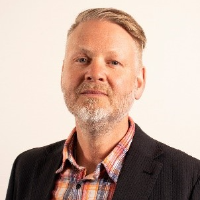IOVS 2025

Dalarna University, Sweden
Title : The Experience of Continuity, and Eye-tracking Research on Visual Behavior and Cognitive Load
Abstract:
Our
surrounding world is continuous. Human vision is not. Still our experience of
the world is that it goes on consistently. Audiovisual perception is key in the
construction of continuity; it is what we rely on. Film and other media, contrary,
is fundamentally discontinuous, providing fragmental impressions for our
perception. Particularly, the sense of continuity is often at stake in
situations that involves interaction with screen media. My research focuses the
experience of continuity and how discontinuity affects cognitive load when
people interact with 2D imagery, aiming to unravel the nuanced ways visual
search strategies play a role in overcoming the potentially disruptive effects
of discontinuity. Cognitive load, defined as the mental effort required for
task completion, has long been recognized as a critical factor in cognitive
psychology. However, how it is affected by discontinuity and visual search
behavior remain a dynamic area of exploration. Eye-Tracking as a scientific
method, can provide valuable insights into the effects of cognitive load on
visual attention and information processing. It allows researchers to analyze
participants' gaze patterns and pupil dilation during cognitive tasks as well
as film events. This method also illuminates how cognitive load can influence
allocation of attention, revealing whether cognitive load leads to shifts in
attention, and how stimuli is processed
in event segments, as chunks. The results of my ET-research, so far, reveals
that cognitive load increases when people unknowingly experience discontinuity.
However, changes in pupil size, that indicate cognitive load, do not
necessarily correlate with specific gaze behaviors.
Biography:
Thorbjörn Swenberg has a
background in TV production as a Video Editor at the Swedish Television, and completed his PhD in 2017 at Mälardalen University
and is Associate Professor in Audiovisual
Studies at Dalarna University since 2021. He is the Vice Head of the School of
Culture and Society, heading the Dalarna Audiovisual Academy (DAVA). He has
published more than 30 papers, journal articles and book chapters on topics of
audiovisual perception, design and media production.
